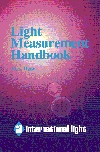 Calibration
Calibration Calibration
CalibrationThe calibration labs then use this transfer standard to calibrate their intercomparison working standards using a monochromatic light source. These working standards are typically identical to the equipment that will be calibrated. The standards are rotated in the lab, tracked over time to monitor stability, and periodically recalibrated.
Detectors are most often calibrated at the peak wavelength of the detector / filter / diffuser combination using identical optics for the intended application. The key to this calibration transfer is a reliable kinematic mount that allows exchangeability of detectors in the optical path, and a stable, power regulated light source. Complete spectroradiometric responsivity scans or calibration at an alternate wavelength may be preferred in certain circumstances.
Although the working standard and the unknown detector are fixed in
precise kinematic mounts in front of carefully regulated light sources,
slight errors are expected due to transfer error and manufacturing tolerances.
An overall uncertainty to absolute of 10% or less is considered very good
for radiometry equipment, and is usually only achievable by certified metrology
labs. An uncertainty of 1% is considered state of the art, and can
only be achieved by NIST itself.
| Wavelength (nm) | Uncertainty (%) |
| 200-250
250-440 440-900 900-1000 1000-1600 1600-1800 |
3.3
0.7 0.2 0.3 0.7 1.3 |
